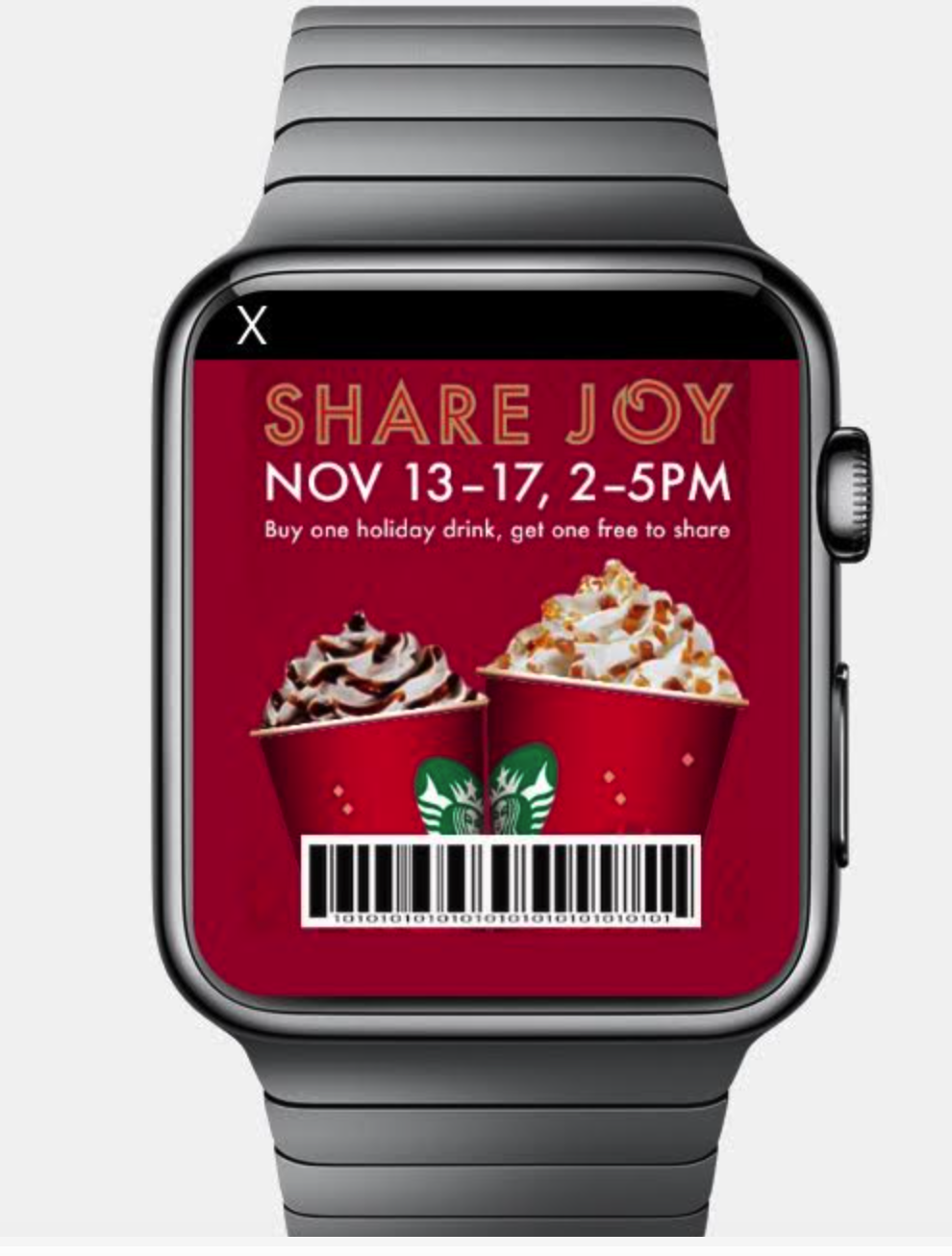There was an interesting announcement today that many will mistake as “advertising” on the upcoming Apple Watch. TapSense announced a hyper-local/contextual platform that delivers promotions to the Apple Watch. Some see this as something people will hate or not appreciate.

However, if done right, this could be extremely valuable and strategic in driving the smartwatch into the mass market.
Deals not Advertising
 Consumer don’t want ads — they want deals. That is, in essence, what TapSense is offering. When you observe what drives behavior for many consumers today, you’d see it has everything to do with deals. Generally, deals come via email or even postal mail. Retailers have know for decades consumers who opt-in to their programs respond extremely well when offered a deal. This example of a Starbucks deal from TapSense shows the potential.
Consumer don’t want ads — they want deals. That is, in essence, what TapSense is offering. When you observe what drives behavior for many consumers today, you’d see it has everything to do with deals. Generally, deals come via email or even postal mail. Retailers have know for decades consumers who opt-in to their programs respond extremely well when offered a deal. This example of a Starbucks deal from TapSense shows the potential.
Where mail and email fail is they are neither timely or contextual. If I am walking by a Starbucks, wouldn’t it be nice to get a deal from them? Or better yet, what if my smartwatch was smart enough to know I was walking, or going to be walking or driving by a Starbucks (since it knows my route thanks to the Maps app), looks at my calendar and sees I have a 30 minute window before my next meeting, it’s 20 degrees outside and I may appreciate a warm beverage? A lot of very smart things have to take place for this to happen but you can see how this is a scenario which is possible and inevitable. One example of many I’ve thought about that make this interesting.
When mobile — meaning not stationary and looking at my phone, tablet, or computer — I’m not staring at my smartphone screen at all times. It is likely in my pocket or bag. The smartwatch is the piece of smart glass I have visible practically at all times. Because of that, while mobile, it is this display which makes the most sense to receive contextual and hyper-local deals.
Lastly, an observation about marketing/advertising. Magazines have always been one of the best examples of great marketing. This has everything to do with magazines generally being fairly niche and interest specific. Personally, I have three special interest magazines I subscribe to — Food, tennis, and farming. I find the advertisements in these magazines extremely useful because I am very interested in these subjects. Therefore, I’m being marketed to because I’m a captive/willing audience for products or services related to my interests. This is the element that has been very hard to replicate in the digital world. Facebook, Google, and others are too broad of platforms and do a terrible job showing me only ads/marketing related to my interests and passions.
I believe the smartwatch will have some role to play here — deal offering rather than generic advertising. Deals personalized to my interests that can impact my shopping/purchasing decisions have great potential. The ability to receive these types of push offerings becomes even more interesting the more personalized the product and the more the platform, in this case iOS, knows (or I allow it) to know about me. And that is key – if Apple allows this functionality, it will undoubtedly be entirely opt-in by the user.
These types of push offers are one of the areas that make me think there is more to this smartwatch category than people realize.
I’ll have more of my thoughts in a report on the smartwatch opportunity later this week.

The potential for this to become a nuisance is frightening.
Unlike most of the reporting on this, Ben points out this *hasn’t* been approved by Apple and, if it does, it will undoubtedly be opt-in. So if it’s a nuisance, it will be your own fault. 🙂
1- long-term, opt-in has a tendency to become opt-out (with glitches), and then not optional
2- yeah, yeah, like those emails and phone calls you mean ? :-p